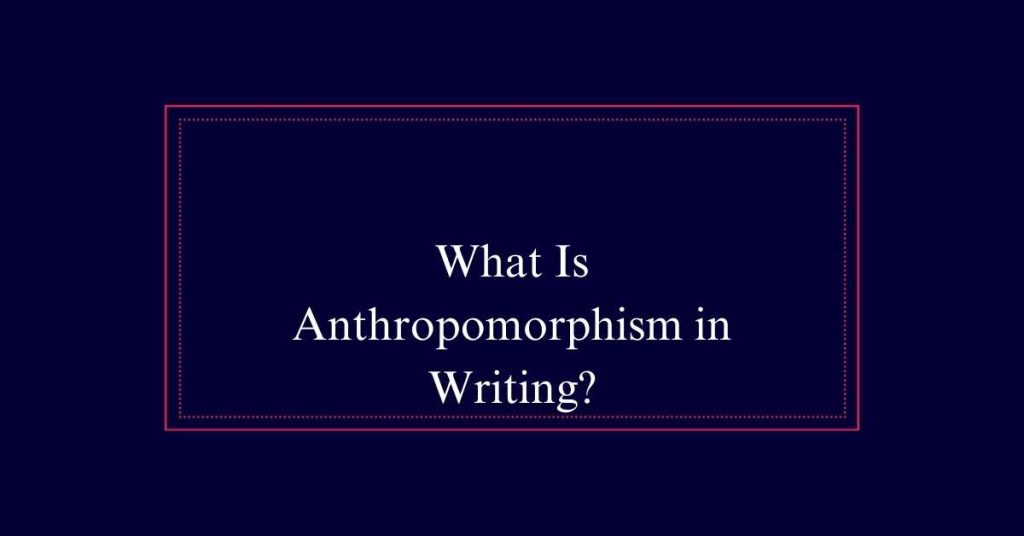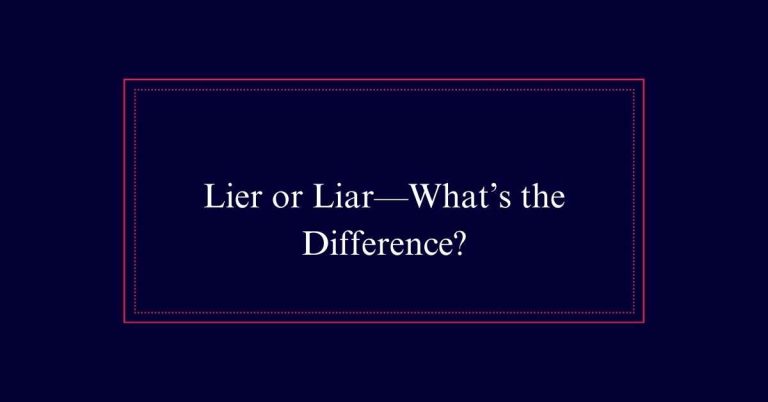What Is Anthropomorphism in Writing?
Anthropomorphism in writing is the attribution of human characteristics, emotions, and behaviors to nonhuman entities such as animals, objects, and abstract concepts. This literary device simplifies complex ideas and engages readers by making nonhuman characters relatable.
Unlike personification, which gives human-like qualities to inanimate objects or abstract ideas without suggesting they are human, anthropomorphism creates fully formed human-like characters. Common in ancient myths and modern stories, it enhances emotional connections and offers unique perspectives.
Defining Anthropomorphism
Anthropomorphism is the attribution of human characteristics, emotions, and behaviors to nonhuman entities. This literary device assigns human-like qualities to animals, objects, and even abstract concepts. The term originates from the Greek words ‘anthropos’ (human) and ‘morphē’ (form).
Anthropomorphic elements are common in various forms of storytelling, including literature, art, and popular culture. Characters like talking animals and sentient machines engage readers by making the nonhuman relatable. This technique is often used to simplify complex ideas, rendering them more accessible and engaging.

It enhances character development and world-building, creating a vivid and immersive narrative experience. As a result, anthropomorphism is a powerful tool for writers to connect with their audience on a human level.
Anthropomorphism Vs. Personification
While anthropomorphism assigns human traits to nonhuman entities, personification uses metaphorical language to give human attributes to inanimate objects and abstract ideas. Anthropomorphism creates characters like talking animals, making them act and think like humans. Personification, on the other hand, brings life to concepts or objects without implying they literally possess human traits.
| Feature | Anthropomorphism | Personification |
|---|---|---|
| Definition | Human traits to nonhuman entities | Human traits to inanimate objects/ideas |
| Usage | Characters in stories | Descriptive language in poetry and prose |
| Example | Mickey Mouse talking and walking | “The wind whispered through the trees” |
| Purpose | Relatable characters | Vivid, imaginative descriptions |
| Impact | Engages readers with lifelike entities | Adds depth and emotion to narratives |
Literary Origins
The roots of anthropomorphism in literature can be traced back to ancient myths and folklore. These early stories often featured gods, spirits, and animals with human characteristics. This literary device made complex ideas more accessible. It also helped people understand the world around them.
Key early examples include:
- Greek mythology: Gods like Zeus and Athena had human traits and emotions.
- Aesop’s Fables: Animals spoke and acted like humans to teach moral lessons.
- Egyptian mythology: Deities like Anubis were depicted with human bodies and animal heads.
- Hindu epics: Characters like Hanuman, the monkey god, exhibited human-like intelligence and emotions.
- Native American folklore: Animals played significant roles and often displayed human behaviors.
Cultural Prevalence
Modern storytelling continues to be heavily influenced by the rich tradition of anthropomorphism found in ancient myths and folklore. This practice is pervasive across various cultures, evident in fables, religious texts, and traditional tales.
Ancient civilizations like the Greeks and Egyptians personified gods and animals to convey moral lessons and cultural values. Today, the legacy of anthropomorphism persists in global media. Films, books, and television shows frequently feature human-like animals and objects.
Characters like Winnie the Pooh and the cast of ‘Toy Story’ resonate with audiences worldwide. This cultural prevalence underscores the enduring appeal of anthropomorphism, bridging generational and cultural divides to create universally relatable narratives. The practice remains a cornerstone of modern creative expression.
Storytelling Benefits
Anthropomorphism enriches storytelling by making characters more relatable and engaging. By attributing human traits to animals, objects, or deities, writers create a bridge between readers and the narrative. This technique enhances the emotional connection and deepens the reader’s experience.
Key benefits include:
- Relatability: Characters with human traits are easier to understand and empathize with.
- Engagement: Readers are more likely to invest in the story when they connect with the characters.
- Creativity: Allows for imaginative scenarios that captivate the audience.
- Accessibility: Simplifies complex ideas, making them accessible to a wider audience.
- Memorability: Creates lasting impressions through unique and vivid characterizations.
Famous Examples
Among the many benefits of anthropomorphism in storytelling, some famous examples highlight its profound impact on literature and culture.
A quintessential example is Aesop’s Fables, where animals embody human virtues and vices.
George Orwell’s ‘Animal Farm’ uses anthropomorphic animals to critique political systems.
In children’s literature, Beatrix Potter’s tales, featuring characters like Peter Rabbit, have captivated generations.
Disney’s animated films, with characters such as Mickey Mouse and Simba from ‘The Lion King,’ are iconic representations of anthropomorphism.
Lastly, in modern literature, Richard Adams’ ‘Watership Down’ presents a society of rabbits with complex social structures.
Religious and Mythological Uses
In many religious and mythological traditions, gods and supernatural beings are often depicted with human characteristics. This practice helps to make divine and mystical entities more relatable and understandable. Anthropomorphism in these contexts serves several purposes:
- Humanizes deities: Gods are given human emotions and behaviors.
- Enhances narratives: Stories become more engaging when gods act like people.
- Facilitates worship: People find it easier to connect with human-like gods.
- Explains natural phenomena: Gods’ actions are used to explain the unexplainable.
- Teaches moral lessons: Human-like behavior in gods often illustrates ethical principles.
Relating to deities in human terms bridges the gap between the mortal and the divine, enriching religious and mythological storytelling.
Psychological Insights
Understanding the psychological reasons behind anthropomorphism can deepen our appreciation of its widespread use in literature and culture. Humans have an innate tendency to assign human traits to nonhuman entities. This helps us make sense of the world around us.
By attributing human characteristics to animals, objects, or abstract ideas, we create a more relatable and engaging narrative.
Anthropomorphism taps into our natural empathy and curiosity. It allows us to explore complex emotions and concepts through familiar, human-like experiences. This connection makes stories more memorable and meaningful.
Additionally, anthropomorphism can simplify abstract ideas, making them easier to understand. This psychological mechanism enriches storytelling, ensuring that diverse audiences can connect with and enjoy the narrative.
Enhancing Creativity
Anthropomorphism fuels creativity by allowing writers to explore imaginative scenarios and diverse perspectives. By attributing human traits to animals, objects, or abstract ideas, writers can craft unique and engaging stories. This literary device opens doors to new worlds and characters that resonate with readers on a personal level.
Key ways anthropomorphism enhances creativity:
- Innovative characters: Nonhuman entities with human traits create memorable and distinct characters.
- Fresh perspectives: Helps to offer alternative viewpoints on familiar themes.
- Engaging narratives: Makes stories more relatable and entertaining.
- Complex themes: Simplifies the exploration of intricate ideas through accessible characters.
- Visual storytelling: Encourages vivid descriptions and imaginative settings.
Criticisms and Challenges
Despite its many benefits, anthropomorphism presents several criticisms and challenges in writing. One major issue is the risk of oversimplifying complex subjects. By attributing human traits to nonhuman entities, writers may inadvertently reduce intricate topics to simplistic narratives. Additionally, anthropomorphism can reinforce stereotypes or misconceptions, particularly when dealing with cultural or natural subjects.
Another challenge is maintaining narrative authenticity. Overuse of anthropomorphic elements may come across as gimmicky or distract from the story’s core message. Moreover, it can limit the audience’s ability to critically analyze the text, as they may focus more on the human-like qualities rather than the underlying themes. Writers must strike a delicate balance to secure that their work remains effective and credible.






